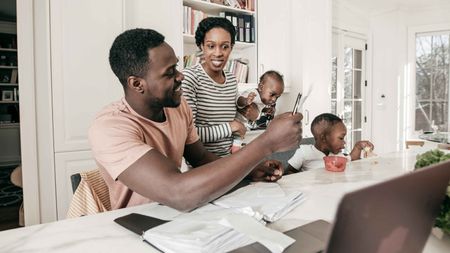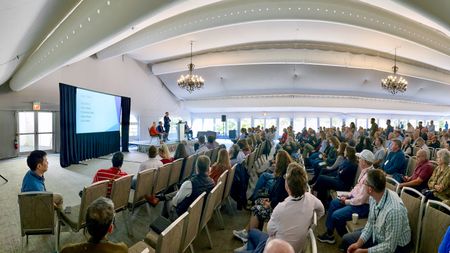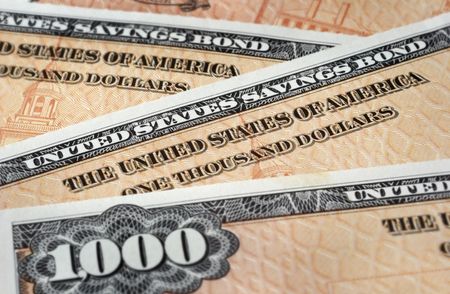Patience Really Pays
The longtime manager of Fidelity Low-Priced stock tells how he built his fabulous record and how he's reacting to wild markets.

Joel Tillinghast is arguably the least-celebrated superstar in the fund business. Fidelity Low-Priced Stock (symbol FLPSX), which he has run since December 1989, is the third-best-performing fund over the past 20 years (with an annualized return through May 31 of 14.0%). And the unusual fund, which mainly buys stocks that trade for less than $35, is number one among diversified funds over that period. But because the reserved Tillinghast, 52, rarely gives interviews, the public doesn’t often get a chance to take his measure beyond the excellent results of his $29-billion fund, a member of the Kiplinger 25. We recently chatted with Tillinghast, whose tenure of more than 20 years managing one fund is currently Fidelity’s longest, at his office in Boston. Below is an edited version of the interview.
KIPLINGER’S: Given that your fund has some 30% of its assets overseas, is the turmoil in Europe affecting the way you run it?
TILLINGHAST: The biggest effect is on the European small-cap stocks the fund owns. We have, for example, a Greek toy retailer called Jumbo. The problems in Greece have hit the stock and probably reduced traffic in Jumbo’s stores, even though they offer attractive value to their customers. We also own Next, a British clothing retailer. With the pound sterling weak and with a lot of Next’s apparel imported, there’s a profit-margin squeeze. It’s not a Next-specific problem. It’s a problem for any company that sells goods in sterling or the euro and pays for them in dollars because their costs, in local-currency terms, go up.

Sign up for Kiplinger’s Free E-Newsletters
Profit and prosper with the best of expert advice on investing, taxes, retirement, personal finance and more - straight to your e-mail.
Profit and prosper with the best of expert advice - straight to your e-mail.
Have you been selling these stocks?
I wish I had done something, but I didn’t. Time will tell whether this was the right decision.
What makes a perfect stock for you?
A company that sells proprietary products -- or at least something that is better than what competitors offer -- and has a good management team, a strong balance sheet with manageable debt and positive free cash flow, and some feature of the business, such as recurring purchases, that allows me to see a little bit into the future. For example, people are not going to stop buying chewing gum. They’re not going to stop buying 80% of the stuff they buy at drugstores. Or perhaps the company has a backlog of business, something you might see at engineering and construction companies.
And where does price fit into the equation?
I want companies that are selling for less than their fair value. I want a low price-earnings ratio, low price to book value and low price to free cash flow.
You can invest in plenty of huge companies that sell for less than $35. Are you interested in behemoths?
And I can’t buy Seaboard, a small cap that trades for almost $1,500. I do hold some mega caps. Let’s say I’m looking at the universe of software and computer-services companies. I ask myself, Can I find a company that has very good free cash flow with a lot of cash on the balance sheet and a stock with a P/E in the low teens? I first look to see whether I can find a bundle of small-cap stocks that have those attractive features. If I can, I’ll buy them. But there are moments when I can’t find enough smaller software companies that are doing what Oracle [ORCL] has been doing in terms of sales growth. So the fund has recently owned Oracle, a large company. But a lot of people buy my fund thinking they’re getting something with a small- and mid-cap tilt, so I prefer to buy those kinds of stocks.
Take us through the analysis of a stock that you bought in the past year or so.
I had already held, but added to my position in, Gildan Activewear [GIL]. It’s a Canadian firm that sells T-shirts for screen printing. So say you want 1,000 shirts that say “Buy Fidelity Contrafund.” Gildan can produce the blanks that a screen printer buys. Gildan also produces other active wear, fleece items and socks. It has been gaining a lot of market share and clearly has been able to produce at lower costs than companies such as Fruit of the Loom, Russell and others.
About 15 months ago, while the economy was in recession, Gildan’s shipments of T-shirts fell something like 25%, an astronomical figure for what I think of as a relatively stable item, and the stock crumpled to about $6. I surmised that there was an incredible amount of destocking going on; screen printers were using up every T-shirt they had, but I thought the underlying demand for T-shirts couldn’t possibly be down that much and that consumers were continuing to buy them. The company had earned more than $1 a share for three consecutive years, had a strong balance sheet, had been consistently gaining market share and had grown very well over time by adding new products, such as socks. I didn’t think this company was about to fail. The stock, meanwhile, was selling for about five times Gildan’s previous peak earnings, which I thought it would easily exceed in a normal environment. The stock has recovered to about $28, and I have lightened up my position a little for valuation reasons.
Your biggest holding at last report was UnitedHealth Group. What’s the case?
What President Obama and a lot of others want from health-care reform is extension of coverage. If you extend coverage, some health insurers will get an opportunity to cover more people, and that means an opportunity to increase revenues, although profit margins will not be very high. The big problem is how to pay for all of this. Costs are high, and they continue to rise above the general inflation rate, so there’s a need to control costs and to control fraud. I think managed care can serve a useful role in that. Yes, profit margins will be under pressure due to things like mandated loss ratios -- a requirement to pay out a certain percentage of premium revenues to cover medical costs. But UnitedHealth [UNH] is selling for less than ten times earnings and less than ten times free cash flow, and it has a decent balance sheet and the largest network of health-care providers in the country.
Do you meet with company managements?I try to visit with three companies every day, on average, as they pass through Fidelity’s offices. I get something like 600 e-mails a day from analysts, brokers and companies.
What do you look for when you meet executives?
A good business strategy. Honest, energetic people trying to do something better than the competition. A sane financial strategy.
Can you tell dishonest managements from honest ones?
I’ve invested in enough failures that I can’t claim that. The most flamboyant case was a CEO who came in with a Hawaiian shirt exposing his 60-year-old chest, which was covered with gold chains.
Did you invest in his firm?
I did not.
What are some of the key lessons you’ve learned over the years?
Patience really helps -- good things take time to work out. It’s best to think through what could go wrong before you invest. Good managers produce good results. It’s a highly subjective part of the analysis, but you really do want to identify honest, energetic management.
But not executives wearing Hawaiian shirts.
Not unless they’re selling them -- and this guy wasn’t.
Get Kiplinger Today newsletter — free
Profit and prosper with the best of Kiplinger's advice on investing, taxes, retirement, personal finance and much more. Delivered daily. Enter your email in the box and click Sign Me Up.

-
 Stock Market Today: Stocks Are Mixed Before Liberation Day
Stock Market Today: Stocks Are Mixed Before Liberation DayMarkets look forward to what comes with the reordering of 80-year-old global trade relationships.
By David Dittman Published
-
 Stagflation: What It Is and Why Retirees Should Care
Stagflation: What It Is and Why Retirees Should CareStagflation — the economic bogeyman of the 1970's — may return to the US. Here's what it could mean to your retirement.
By Donna Fuscaldo Published
-
 Best Banks for High-Net-Worth Clients 2024
Best Banks for High-Net-Worth Clients 2024wealth management These banks welcome customers who keep high balances in deposit and investment accounts, showering them with fee breaks and access to financial-planning services.
By Lisa Gerstner Last updated
-
 Stock Market Holidays in 2025: NYSE, NASDAQ and Wall Street Holidays
Stock Market Holidays in 2025: NYSE, NASDAQ and Wall Street HolidaysMarkets When are the stock market holidays? Here, we look at which days the NYSE, Nasdaq and bond markets are off in 2025.
By Kyle Woodley Last updated
-
 Stock Market Trading Hours: What Time Is the Stock Market Open Today?
Stock Market Trading Hours: What Time Is the Stock Market Open Today?Markets When does the market open? While the stock market does have regular hours, trading doesn't necessarily stop when the major exchanges close.
By Michael DeSenne Last updated
-
 Bogleheads Stay the Course
Bogleheads Stay the CourseBears and market volatility don’t scare these die-hard Vanguard investors.
By Kim Clark Published
-
 The Current I-Bond Rate Until May Is Mildly Attractive. Here's Why.
The Current I-Bond Rate Until May Is Mildly Attractive. Here's Why.Investing for Income The current I-bond rate is active until November 2024 and presents an attractive value, if not as attractive as in the recent past.
By David Muhlbaum Last updated
-
 What Are I-Bonds? Inflation Made Them Popular. What Now?
What Are I-Bonds? Inflation Made Them Popular. What Now?savings bonds Inflation has made Series I savings bonds, known as I-bonds, enormously popular with risk-averse investors. So how do they work?
By Lisa Gerstner Last updated
-
 This New Sustainable ETF’s Pitch? Give Back Profits.
This New Sustainable ETF’s Pitch? Give Back Profits.investing Newday’s ETF partners with UNICEF and other groups.
By Ellen Kennedy Published
-
 As the Market Falls, New Retirees Need a Plan
As the Market Falls, New Retirees Need a Planretirement If you’re in the early stages of your retirement, you’re likely in a rough spot watching your portfolio shrink. We have some strategies to make the best of things.
By David Rodeck Published